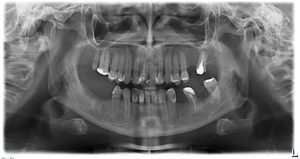Gains come from other activities, such as gain on sale of equipment, gain on sale of short-term investments, and other gains. Liabilities represent claims by other parties aside from the owners against the assets of a company. Through this, we will be able to determine the cash balance as all related additions and deductions are collated in the account. When economists look at capital, they are most often looking at the cash in circulation within an entire economy. Some of the major national economic indicators are the ups and downs of all of the cash in circulation.
Common and preferred stock are recorded at the par value of total shares owned by shareholders. Additional paid-in capital is the amount shareholder’s have paid into the company in excess of the par value of stock. Retained earnings is the cumulative earnings of the company overtime, minus dividends paid out to shareholders, that have been reinvested in the company’s ongoing business operations.
The current and capital accounts represent two halves of a nation’s balance of payments. The current account represents a country’s net income over a period of time, while the capital account records the net change of assets and liabilities during a particular year. The other two parts of the balance of payments are the financial account and the current account. The financial account measures the net change in ownership of foreign and domestic assets.
- Many capital assets are illiquid—that is, they can’t be readily turned into cash to meet immediate needs.
- Let’s assume you own a coffee shop in Oklahoma and want to know the equity of your business.
- If by the end of the fiscal year, the company reports a net income of USD 20,000, your capital account would increase by USD 10,000, making it a total of USD 30,000 each.
Now deduct the amount of loan principal that has been repaid, any amounts of loan principal forgiven by the shareholder, and the amount of loan principal converted to stock. You must also deduct the share of net loss in excess of a shareholder’s adjusted stock basis. The result is the adjusted basis in S corporation debt at the end of the year. Debt is a loan or financial obligation that must be repaid in the future. It has an interest expense attached to it, which is the cost of borrowing money.
What Does Capital Mean in Economics?
A surplus in the capital account means there is an inflow of money into the country, while a deficit indicates money moving out of the country. In this case, the country may be increasing its foreign holdings. Understand what capital is and then find out how each type of business owner’s capital account works.
- How the business owner’s capital account is structured depends on the type of business.
- When you start a business and want to get a bank loan, banks like to make sure you have invested in your business.
- Capital account is particularly useful when it comes to property contributions as well because a value is assigned to each property.
- At the end of each accounting period, the net income or losses are added or subtracted, respectively, to/from the capital accounts.
For small businesses starting on a shoestring, sources of capital may include friends and family, online lenders, credit card companies, and federal loan programs. Other private companies are responsible for assessing their capital thresholds, capital assets, and capital needs for corporate investment. Most of the financial capital analysis for businesses is done by closely analyzing the balance sheet.
Business Capital Structure
Actual cash is not received, instead, adjustments are made within relevant accounts. During the preparation of final accounts, debts written off after the trial balance is finalized are transferred to the profit and loss account. This section is dedicated to the practice of the three types of accounts in accounting. Practising this will help you gain a better understanding of the subject.
Type – Cash A/c is a Real account, Discount Allowed A/c is a Nominal account, and Unreal Co. The following section provides a brief overview and explanation of the most commonly used accounts and their types. Let’s assume you own a coffee shop in Oklahoma and want to know the equity of your business. Intellectual refers to the intelligence of people, which can be used to successfully run a company, think creatively, solve problems, form strategies, and outperform competitors.
All cash receipts are recorded as increases in “Cash” and all payments are recorded as deductions in the same account. Most businesses distinguish between working capital, equity capital, and debt capital, although they overlap. The capital of a business is the money it has available to fund its day-to-day operations and to bankroll its expansion for the future. In other words, it’s cash in hand that is available for spending, whether on day-to-day necessities or long-term projects. On a global scale, capital is all of the money that is currently in circulation, being exchanged for day-to-day necessities or longer-term wants.
How the Capital Account Is Part of the Balance of Payments
Capital must not be confused with cash because capital does not equate to cash at all times although both are valuable to your business and are essential components. In some cases, capital can be more valuable than cash because you can generate more money with it such as when you invest. Capital in accounting can be determined by looking at your accounting records. Using a reliable software solution like TallyPrime will ensure each record is accurate and trustworthy. This will enable you to make wise decisions based on where to invest and how much to invest.
This will give them the confidence they need to approve the loan amount that you require. Hence, a capital account is quite useful when it comes to applying for bank loans. In financial accounting, the capital account is one of the accounts in shareholders’ equity.
What determines the owner’s Capital Account Requirements?
Adjusted basis cannot be below zero, but using this formula for calculating adjusted basis often results in a negative number. Handling “negative basis” of S corporation stock involves reducing a shareholder’s stock basis, but not below zero, and reducing the shareholder’s loan basis, but not below zero. A shareholder might contribute a computer, a desk, reference books, and software programs to the newly formed S corporation in addition to making a cash investment.
Create a free account to unlock this Template
They are then eligible to receive dividends which depends on how many shares they have purchased of your business. They keep a record of the profits they earn in their capital account of their balance sheet. When the time comes, dividends are paid to the various shareholders of Forever Mode. All of this is recorded in the capital account of your business’s balance sheet. As mentioned above, the capital account is one piece of the balance of payments system.
Finally, deduct depletion for oil and gas properties not in excess of the property’s basis. This is debt capital, and it can be obtained through private 20+ professionally crafted freelance invoice templates or government sources. For established companies, this most often means borrowing from banks and other financial institutions or issuing bonds.
Both the current account and capital account of a nation’s finances detail aspects of its balance of payments. The current account shows how much a country brings in income, signifying its balance of trade. The capital account details inflows and outflows that impact a nation’s assets and liabilities. There are limits on how much you can withdraw from your capital account and when you can withdraw it, based on your company’s documentation.










